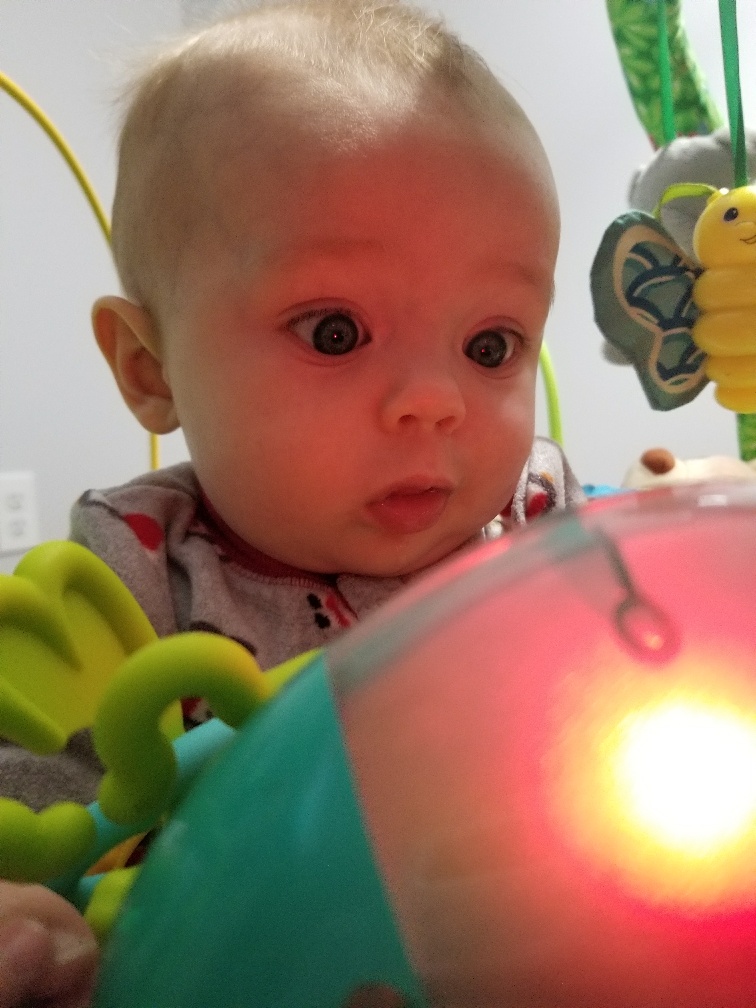
Sensory development, often called sensory processing, is the process of your baby taking in all the information from the world and making sense of it. Sensory processing lays the foundation for learning and development. You can dramatically improve your baby’s development by providing experiences to stimulate each of the sensory areas. It is also helpful to be aware of what typical sensory development looks like, because children on the autism spectrum typically have difficulty with sensory processing and spotting these differences early can help children get early intervention in time to make an impact.
Vision:
• Jiggle a playing card in front of your baby’s eyes. Once they are able to focus on it, move it in horizontal and vertical arcs 8-10 inches from his face encouraging your baby to track the card with his eyes.
• Provide baby with black, red, and white toys; hang mobiles above her cribs.
• Allow your baby to look at herself in the mirror or cut out pictures of babies from magazines and hang for baby to look at while in the car seat.
• If breastfeeding, switch sides half-way through feeding so that your baby has the opportunity to gaze at your face from both sides.
• Occasionally move your baby’s crib to the other side of the room so that he has to turn his head to look at the light source or mobile.
 Hearing:
Hearing:
• Read to your baby; encourage him to look at the pictures and help you turn the pages.
• Provide as much music with varying sounds, pitches, and rhythm as you can.
• Studies show that babies prefer mother’s voice to any other sound. Calm your baby by talking to him.
• Sing to your baby as much as possible.
• Help your baby link two senses together by associating sound and vision. Allow your baby to play with toys that also make noise, such as rattles and musical instruments.
• Talk to your baby often so that she can learn to process language and begin to understand the flow of a conversation.
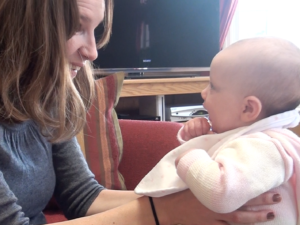
Taste and Smell:
- Help your baby link two senses together by teaching her to associate a certain scent with a certain experience. For example, use a lotion at massage time or a special soap at bath time.
- Around 6 months when you begin feeding your baby solid foods, allow her to smell the foods first.
- Provide not only all of the food groups but all of the “tastes” as well – i.e. sweet, sour, salty, and bitter when it is time for solid foods.
- Introduce your baby to different textures of food as well; even if it is just a tiny bit on your finger. It’s important for their brain to process the variety of tastes and scents.
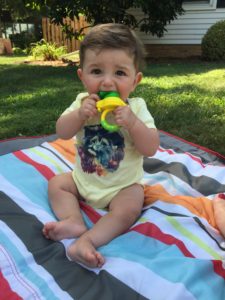 Balance:
Balance:
• Provide movement through swings, vibrating chairs, gentle rocking, and bouncing.
• When baby is able to hold his head up, hold him vertically in a baby carrier or ‘snuggle’ as much as possible, so he gets used to being upright and processing the world from that position.
• Lay baby down on her belly or back on a large ball or bolster pillow and roll it gently side-to-side and forward and back, supporting her by her torso.
• Simply being positioned in different ways helps the Vestibular System, or balance to develop.
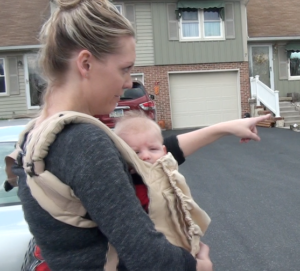 Touch:
Touch:
- Baby massage is the best thing to help baby process touch, pressure, and body awareness.
- Swaddle baby in a blanket for neutral warmth and calming effect to baby’s entire system.
- Rub lotion on baby while naming her body parts.
- Trickle water over baby’s body in the bath while encouraging them to look at that body part.
- Wrist and bootie rattles are great for body awareness.
- Position baby on his side or tummy so he can bring his hands together.
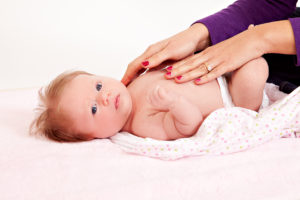 Coordinating movement:
Coordinating movement:
- Bring your baby’s hands or feet together at midline to clap, hold a toy, or touch each other, helping both sides of the brain work together.
- Bring baby’s opposite hands and feet together – this stimulates both sides of the brain to work together.
- Allow baby a lot of ‘tummy time’ to strengthen shoulder and neck muscles; also stretch front hip muscles to prepare for crawling.

- Lie on your back and place your baby tummy down on your chest. Talk to her so she lifts her head. You can hold a toy in front of her to strengthen her neck muscles.
- Sit in a chair and place your baby across your legs on his tummy. Stroke your baby’s head, neck, and back in one motion, encouraging him to lift his head.
- Put your baby on her tummy with a small, rolled-up towel under her armpits so that she is holding her head up and putting weight through her stability which is so important for crawling, pulling to stand, and eventually fine motor skills.
References:
Baby’s First massage. (2018). https://babysfirstmassage.com
Aamodt, S. & Wang, S. (2011). Welcome to Your Child’s Brain: How the Mind Grows from Conception to College. Bloomsbury, NY.
Sasse, M. (2010). Active Baby, healthy Brain. The Experiment Publishing.

